“In the world of eCommerce, change is the only constant,” as we step into 2023, this adage couldn’t ring truer. The eCommerce landscape is in a perpetual state of evolution, and this year promises to bring forth a fresh wave of trends and innovations that will shape the industry. From the integration of augmented reality to the rise of sustainable shopping and the continued growth of subscription models, the eCommerce trends 2023 are poised to make a profound impact.
Statistics indicate that the eCommerce market is poised for continued growth, with a projected global market size, according to Statista. This underscores the significance of staying ahead of the curve and embracing the trends shaping the industry’s future.
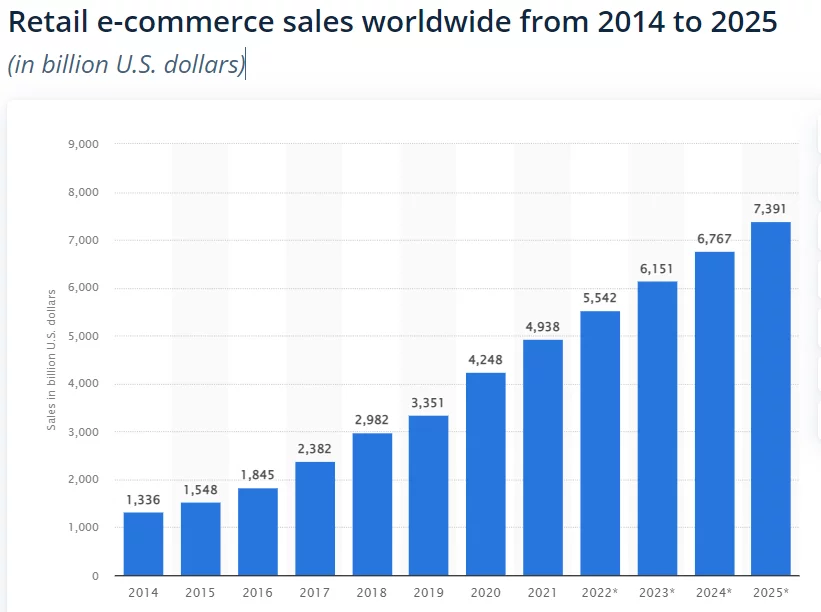
Top E-commecre Trends of 2023:
1. Personalization with AI
Personalization is a pivotal application area, tailoring user experiences based on accumulated knowledge. An 80% consumer preference for personalized shopping experiences has been identified in surveys.
The global personalization software market anticipates robust growth, with a projected compound annual growth rate (CAGR) of 23.67%, reaching over $5 billion by 2030, up from $943.25 million in 2022.
Leading eCommerce companies like Starbucks utilize AI and machine learning to excel in personalization. Starbucks, for instance, customizes 60% of cold beverage orders based on customer behavior data. They employ real-time data from their mobile app to craft over 400,000 personalized in-app push notifications, factoring in customer preferences, activity, past purchases, and location.
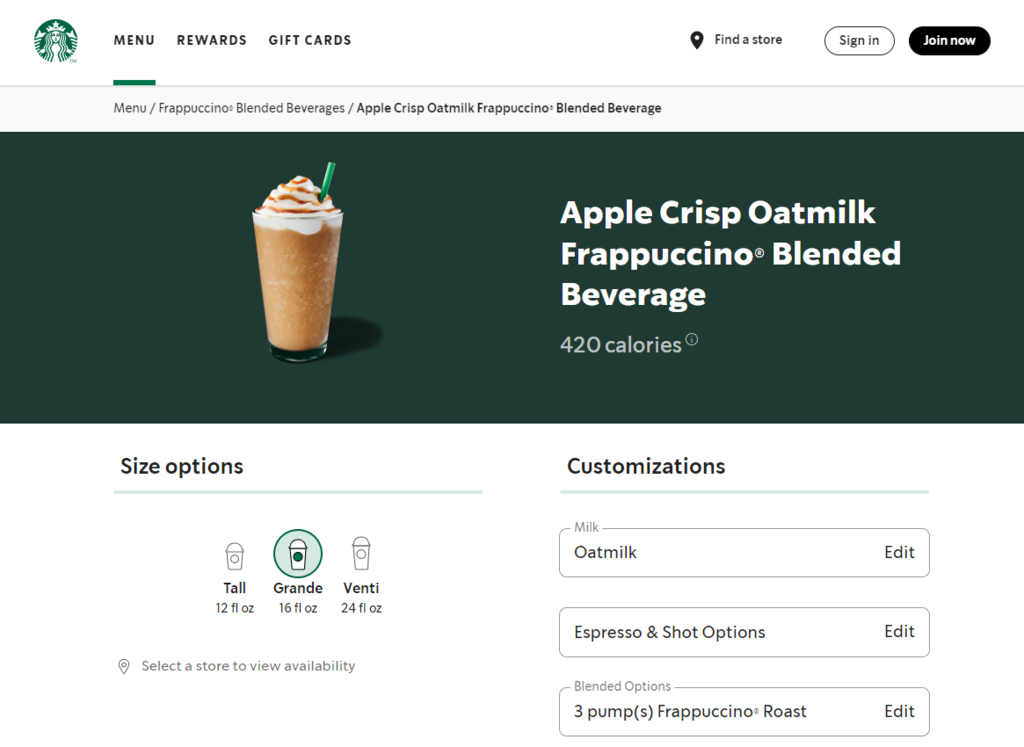
The future of AI in eCommerce appears promising, as the global AI market is expected to soar to $407 billion by 2027, a significant increase from $86.9 billion in 2022. A separate study highlights that 91.5% of prominent brands and companies maintain continuous investments in AI.
2. Prioritizing Customer Service
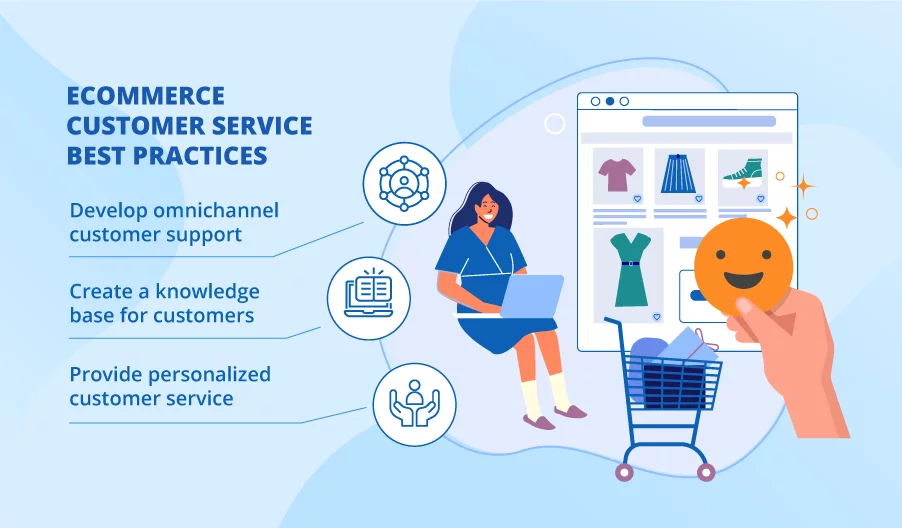
Customer support remains an enduring and indispensable facet of any business operation. Issues related to products or services can potentially alienate existing customers and deter prospective buyers, underscoring the company’s fundamental responsibility to furnish high-quality assistance.
The consumer landscape is increasingly characterized by a demand for immediate interaction, rendering live chat the preferred mode of communication. 41% of consumers prefer live chat over traditional support channels such as phone, email, and social media. This preference stems from live chat’s ability to provide instantaneous assistance with minimal effort on the customer’s part.
Many businesses have incorporated customer service chatbots into their operations in response to the surging need for real-time customer service. These chatbots are pivotal in streamlining the customer journey, from initial acquisition to long-term retention.
The global chatbot market anticipates substantial growth, manifesting an average Compound Annual Growth Rate (CAGR) of 25.7% and projecting a market value of $3.99 billion by 2030. Given the year-on-year increase of 64% in the demand for immediate responses, the integration of chatbots emerges as a prudent strategic move.
Uniqlo IQ exemplifies an innovative approach to chatbot implementation. Beyond conventional customer service, Uniqlo IQ serves users in multifaceted ways, assisting in product selection that complements recent purchases and curating outfits suited to specific occasions.
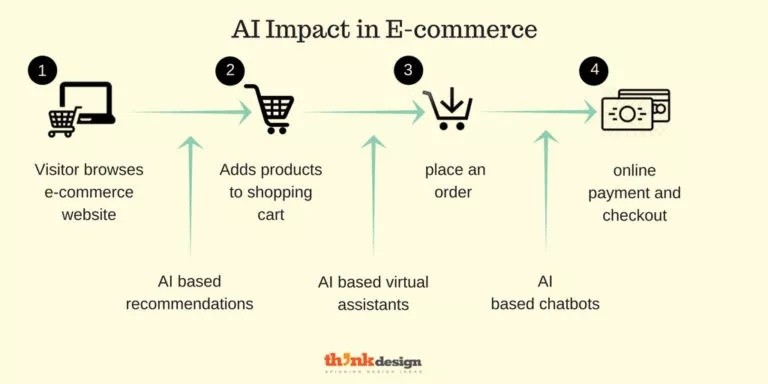
Thankfully, the process of incorporating chatbots into eCommerce websites is relatively straightforward. For WordPress users, there is a selection of top-tier AI-driven chatbot plugins available, including Tidio, IBM Watson Assistant, and WP Chatbot Plugin, making the integration of this valuable customer support tool accessible and efficient.
3. Pay heed to Customer Relationship Management
CRM serves as the linchpin for comprehending customer needs and behavior, furnishing business owners with invaluable insights. This deeper understanding, in turn, fortifies relationships and cultivates a devoted customer base.
Forecasts for the CRM market indicate its burgeoning potential, with an anticipated valuation of approximately $128 billion expected by 2028. Furthermore, a remarkable statistic reveals that over 91% of companies boasting ten or more employees have integrated CRM systems into their operations, underscoring the ubiquity of CRM in managing customer dialogues.
Within the CRM toolkit, loyalty and reward programs emerge as standout strategies. Astonishingly, a resounding 75% of customers exhibit a preference for companies that extend such incentives. Beyond enhancing customer loyalty, these programs deliver tangible benefits, augmenting retention rates by 5% and generating profit increments ranging from 25% to 95%.
The North Face’s “XPLR Pass” is a prime example of an effective loyalty program. This initiative enables customers to accumulate points through various actions, including product purchases, store check-ins, and referrals. Each accumulation of 100 points translates to a $10 reward, redeemable for The North Face’s products. Additionally, loyalty members gain access to exclusive merchandise, birthday gifts, and participation in field testing opportunities.
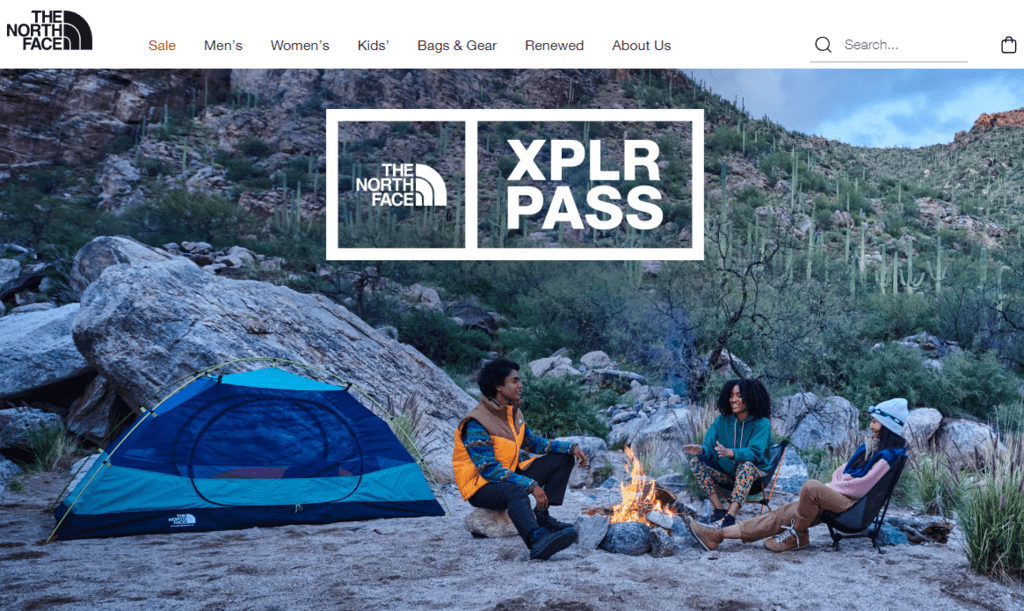
4. Augmented and Virtual Reality (AR/VR)
The AR/VR market, growing consistently at an impressive ten-year Compound Annual Growth Rate (CAGR) of 41.1%, is poised to achieve a substantial market valuation of $856.2 billion by 2031. In eCommerce, numerous forward-thinking brands enthusiastically embrace AR and VR technologies to elevate the shopping experience, making it more immersive and engaging for customers.
The feedback from consumers regarding these innovations has predominantly been positive. According to a survey, 71% of respondents indicated that they would increase their shopping activity if businesses integrated AR into their offerings. Another revealing study highlights that companies incorporating AR/VR content into their strategies enjoy a remarkable 94% higher conversion rate, underscoring the potent impact of these technologies on consumer behavior.
One exemplary pioneer in the application of augmented reality is IKEA. The IKEA Place mobile app, leveraging Apple’s ARKit platform, enables customers to visualize digitally recreated 3D representations of products within the context of their own homes. This empowers users to assess whether a particular furniture item harmoniously fits into their living spaces, all through the convenience of their mobile devices. IKEA’s innovative use of AR exemplifies these technologies’ practicality and potential in reshaping how consumers interact with products and brands.
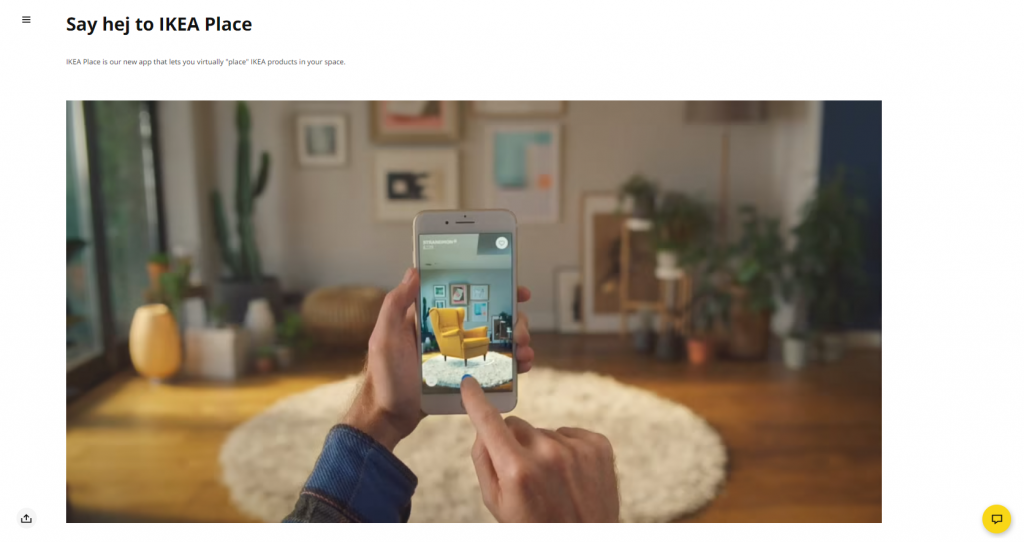
5. Flexible Payment Options
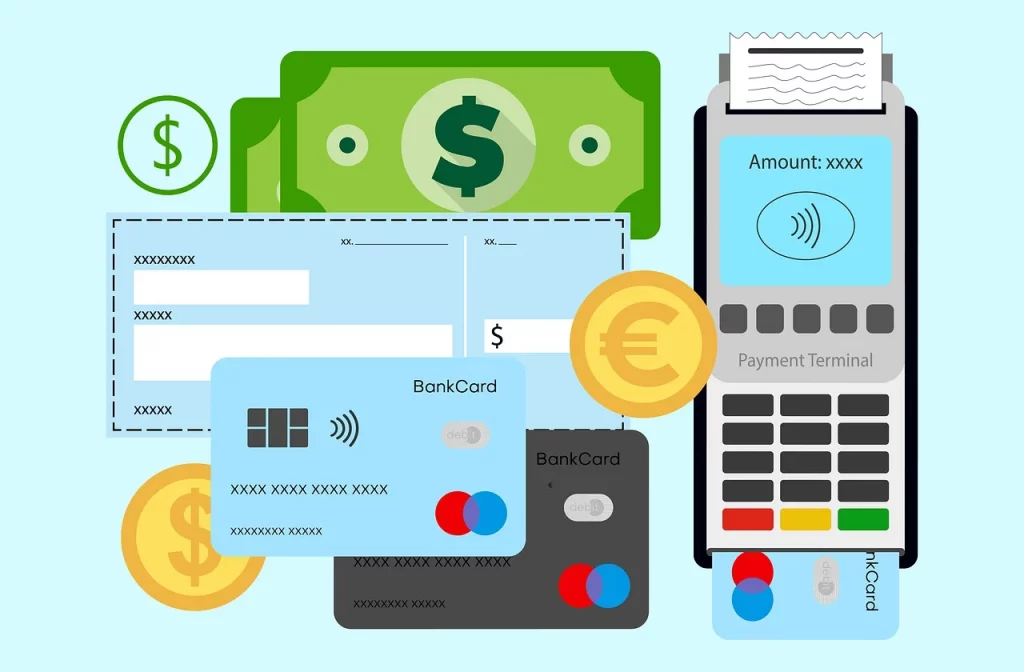
Don’t miss out on potential customers simply because your website doesn’t cater to their preferred payment methods. Embrace the future of eCommerce by considering a diverse range of popular and alternative payment options.
Given the near ubiquity of mobile devices, providing mobile payment solutions has emerged as a global eCommerce trend of paramount significance. In 2021, digital or mobile wallets staked a claim in 49% of global eCommerce transactions, with projections indicating that they would facilitate approximately 53% of all eCommerce transactions by 2025.
However, it’s crucial to recognize that the popularity of payment methods can vary significantly by region. For instance, credit cards are the preferred choice for most individuals in South Korea, while bank transfers reign supreme in Thailand.
An intriguing player in the payment landscape is “Buy Now, Pay Later” (BNPL), which empowers customers to split their payments into installments, often without interest charges. This payment method is poised to amass a substantial transaction volume, expected to reach a staggering $680 billion by 2025, with growth trajectories remaining robust.
BNPL carries significant advantages for enhancing the customer experience. Its capacity to facilitate lower initial payments instills confidence in buyers, bolstering retail sales and reducing cart abandonment rates by an impressive 35%. Furthermore, BNPL is a versatile solution applicable across various products, from everyday items like food to more substantial investments such as electronics.
Explore gateways supporting installment payments to incorporate BNPL into your checkout process seamlessly. Leading BNPL providers, including names like PayPal Pay in 4, Klarna, Affirm, and Afterpay, present viable options to cater to your customers’ diverse payment preferences.
- Industry: Technology
- BNPL Integration: Apple introduced an Apple Card Monthly Installments program, allowing customers to purchase and pay for Apple products over several months with 0% interest. This initiative has made Apple’s premium products more accessible to a wider audience.
- Industry: Retail
- BNPL Integration: Walmart introduced its BNPL service, “Affirm,” allowing customers to split purchases into four payments. This strategy aims to attract budget-conscious shoppers and increase cart sizes.
- Industry: eCommerce Platform
- BNPL Integration: Shopify has integrated various BNPL providers like Afterpay, Klarna, and Affirm into its platform, allowing thousands of online stores to offer BNPL options to their customers. This has become a game-changer for small and medium-sized businesses seeking to enhance their sales.
6. Social Commerce
The realm of social media commerce, already a multi-billion-dollar industry, is poised for remarkable growth, with sales projected to triple by 2025, scaling to a staggering $1.2 trillion. This trajectory is further bolstered by the proliferation of global social network users, which surged past the four-billion milestone in 2021 and is expected to approach nearly six billion by 2027.
For eCommerce enterprises, capitalizing on this trend is paramount, particularly given that a substantial 75% of users employ social media platforms as a research tool for products. Among these platforms, Facebook currently reigns supreme, boasting an expansive user base of approximately 2.9 billion individuals worldwide.
The integration of built-in eCommerce functionalities, exemplified by platforms like TikTok Shop, Instagram Shopping, Facebook Shops, and Pinterest’s shoppable ads, empowers business owners to seamlessly orchestrate campaigns aimed at reaching prospective customers.
Influencer marketing emerges as a potent strategy, driving organic traffic and attracting new customers at a lower cost, delivering an impressive return of $5.78 for every dollar invested. Remarkably, 60% of marketers have attested that influencer-generated content garners higher engagement and outperforms branded posts, while an impressive 80% of consumers have made purchases based on influencer recommendations.
Exemplifying this strategy’s effectiveness, online retail leader Net-A-Porter adeptly leverages influencer marketing. They feature articles in the realm of fashion and lifestyle, prominently showcasing influencers, celebrities, and industry figures. To stimulate sales, Net-A-Porter seamlessly integrates “Shop the Look” links beneath photographs of the featured individuals.

7. Embracing Voice and Visual Search
Advancements in AI have opened up new avenues for customers to harness the power of visual and voice searches. These AI-driven site search systems leverage machine learning and natural language processing (NLP) to decipher the intent behind search queries, ensuring the delivery of highly relevant results.
Visual search empowers online shoppers to initiate searches using images, a trend poised for substantial growth with a projected Compound Annual Growth Rate (CAGR) of 17.5%. By 2028, it anticipates soaring to a market value exceeding $32 million.
Notably, research indicates that 62% of millennials and Gen Z express a desire to employ visual search, yet merely around 8% of brands currently offer this functionality.
The ASOS app, for example, seamlessly integrates visual search through its Style Match feature. Shoppers can upload a photo of an item they wish to purchase online, subsequently receiving a list of products closely resembling the uploaded image. Entrepreneurs looking to embrace this shopping trend can amplify their store’s discoverability on platforms equipped with visual search capabilities, such as Google and Pinterest, by featuring high-quality product photos.

To optimize your eCommerce store for voice search, target securing a top-ranking position on Google, as it prioritizes top-ranking content for voice search users. Furthermore, crafting a well-thought-out keyword strategy is paramount, recognizing that voice search queries often manifest as complete questions rather than fragmented phrases. For instance, someone seeking nearby online stores selling masks might inquire, “Ok, Google, where can I buy masks near me?”

8. Improving Conversion Rates in eCommerce
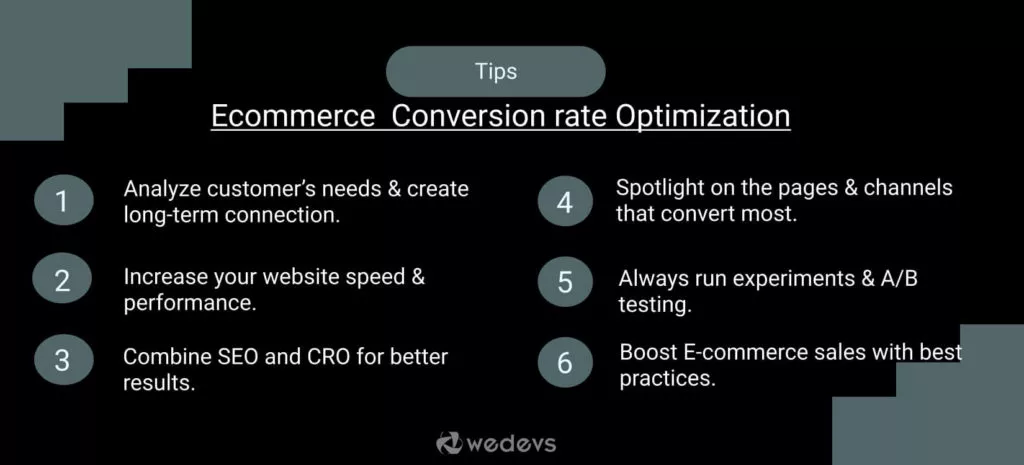
Enhancing conversion rates on your eCommerce website is vital for transforming visitors into engaged customers. Conversion Rate Optimization (CRO) is the key to achieving this objective, whether you aim to boost online sales, increase signups, or encourage other desired actions.
Tools for Qualitative Data Analysis:
- Hotjar: Hotjar provides valuable solutions for qualitative data analysis in CRO. It helps you understand user behavior through heatmaps, session recordings, and surveys, allowing you to make informed improvements.

- Glassbox: Glassbox is another robust tool for qualitative data analysis. It offers insights into user interactions on your website, helping you identify pain points and areas for enhancement.
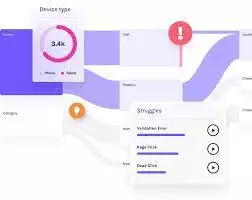
- Mixpanel: Mixpanel is an excellent choice for quantitative data analysis. It focuses on user-centric analytics, allowing you to track events, funnels, and user engagement, facilitating effective optimization strategies.
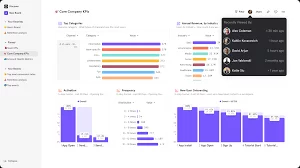
9. Streamlining Marketing with Automation
Marketing automation, driven by machine learning capabilities, empowers businesses to automate various marketing tasks such as ad campaigns, outreach, and follow-up emails.
This technology goes beyond generic messaging by utilizing customer data to craft personalized messages tailored to each stage of the buyer’s journey. This results in enhanced customer engagement and increased conversion rates.

Marketing automation also helps reduce cart abandonment rates by deploying automated emails that encourage customers to complete their purchases, often by offering enticing incentives like free shipping coupons.
Various tools are available to seamlessly integrate automation into online stores. For email marketing, platforms like Mailchimp and Constant Contact are instrumental. WordPress users can access marketing automation plugins like ActiveCampaign, simplifying marketing efforts and increasing efficiency.
10. Empowering Data Privacy with Zero-Party Data
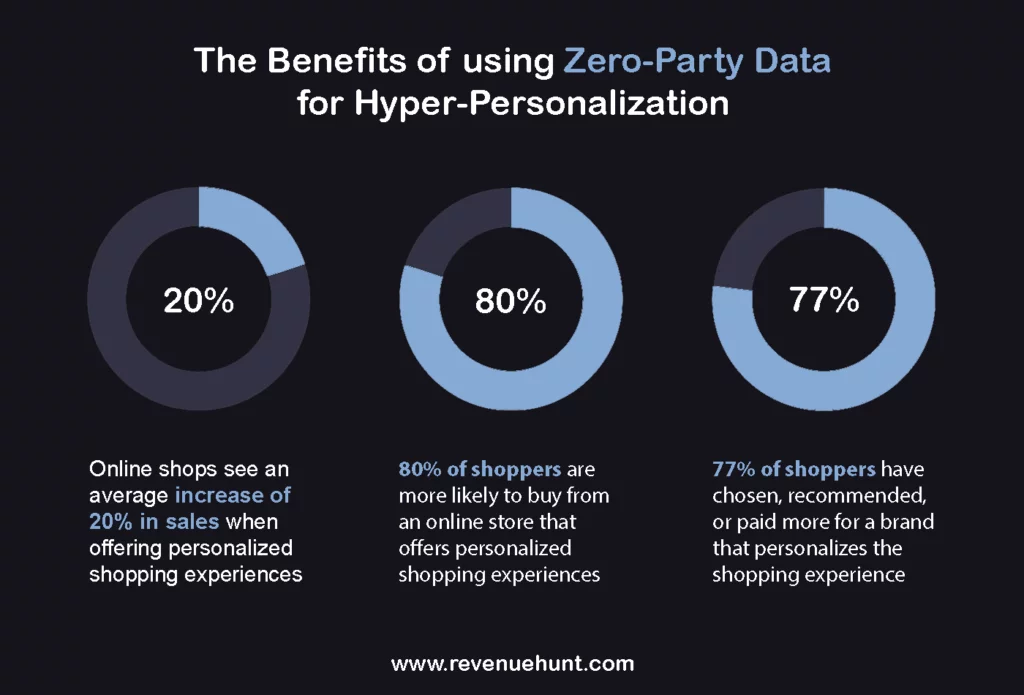
Data privacy is a top concern for consumers, with 86% expressing strong interest in this aspect. They demand transparency and control over their data, and inadequate data policies lead to consequences, as 47% have switched companies due to privacy concerns.
Companies like Apple have introduced features like App Tracking Transparency, allowing users to opt out of data tracking. Google Chrome is also phasing out third-party cookies, starting in mid-2023.
In response, businesses are focusing on collecting zero-party data – information directly obtained from consenting customers. Zero-party data can be gathered through quizzes, polls, and registration processes. It ensures compliance with data privacy regulations and enhances customer engagement. However, it’s essential to strike a balance and avoid overwhelming customers with excessive data requests.
Example: Patagonia, the Outdoor Apparel Retailer

Patagonia is a renowned outdoor apparel retailer dedicated to sustainability and transparency. They understand that their customers value privacy and control over their data. To address these concerns, Patagonia has implemented a zero-party data strategy.
Here’s how they do it:
- Interactive Surveys: Patagonia engages its customers through interactive surveys and questionnaires. These surveys are designed to be enjoyable and informative, encouraging customers to willingly share their preferences, interests, and even environmental concerns.
- Transparency: The company is transparent about how it uses customer data. They communicate that the data collected is used to provide personalized recommendations, offer eco-friendly product choices, and reduce marketing clutter.
- Personalized Experience: Patagonia can offer a highly personalized shopping experience by collecting zero-party data. Customers receive product recommendations based on their preferences, making their shopping journey more efficient and enjoyable.
- Respect for Privacy: Patagonia respects its customers’ privacy choices. They allow users to opt in or out of data collection and provide easy-to-use privacy settings.
11. Embracing Sustainability in Online Shopping
The environmental impact of eCommerce, particularly regarding sustainability, is a growing concern. CO2 emissions from freight shipping could reach 25 million metric tons by the end of this decade. The pandemic has amplified consumers’ appreciation for sustainability, with 52% acknowledging its importance.
Nearly 80% of customers consider sustainability when making online purchasing decisions. Sustainable or “green” commerce is a prominent trend, particularly in packaging and delivery.
- Shipping alone contributes to 3% of global greenhouse gas emissions.
- 65% of consumers seek sustainably packaged products, with 29% avoiding plastic packaging.
- In fashion, 64% of US and UK consumers insist on reduced packaging.
One example of sustainable eCommerce is Thrive Market, an online grocery membership store. They prioritize ethically sourced products, use carbon-neutral packaging, and maintain zero-waste warehouses, embodying sustainability principles in every operation.

To thrive in the evolving eCommerce landscape, businesses must adapt to meet consumer demands for a greener shopping experience, as companies like Thrive Market exemplify.
12. Hybrid Stores
The future of eCommerce is heading towards a “physical” approach, blending online channels with physical retail experiences. This innovative eCommerce model seamlessly integrates various platforms, promoting hybrid commerce and omnichannel sales.
One effective way to implement omnichannel selling is through “click-and-collect,” also known as buy online, pick up in-store (BOPIS). This service enables customers to make online purchases and conveniently pick up their orders at the store or designated pickup locations.
The popularity of click-and-collect has steadily increased due to the convenience of online shopping, swift in-store pickups, and zero shipping costs. Its projected value is set to exceed $154 billion by 2025, with major retailers like Walmart, Target, and IKEA offering this service.
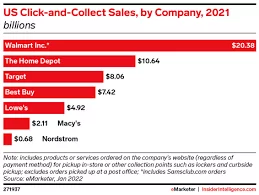
Another emerging trend is “research online, purchase offline” (ROPO) consumer behavior. ROPO eliminates shipping fees and allows customers to inspect products in person before making a purchase, a preference held by 56% of shoppers.
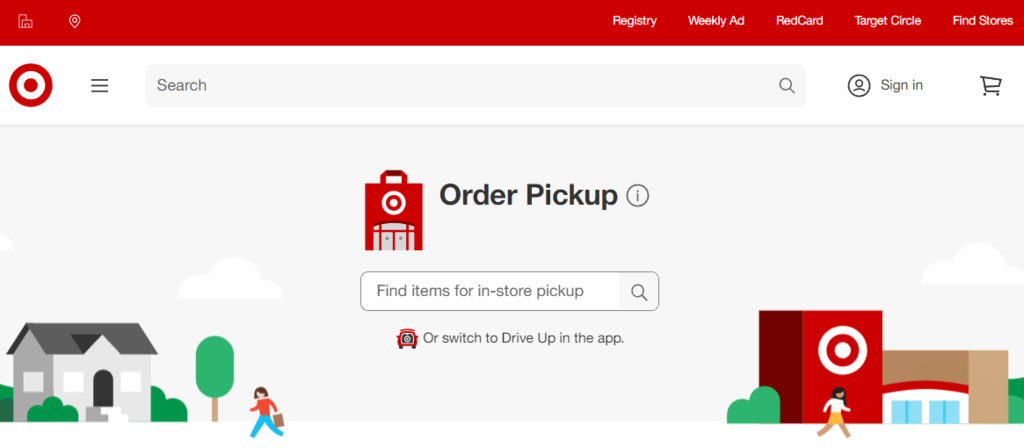
E-commerce businesses can consider adopting progressive web apps (PWAs) to cater to diverse customer preferences. PWAs provide a versatile solution for businesses torn between developing a dedicated eCommerce app or website. These apps function like native apps, ensuring compatibility across various devices and browsers and optimizing mobile users’ shopping experience.
13. Subscription models
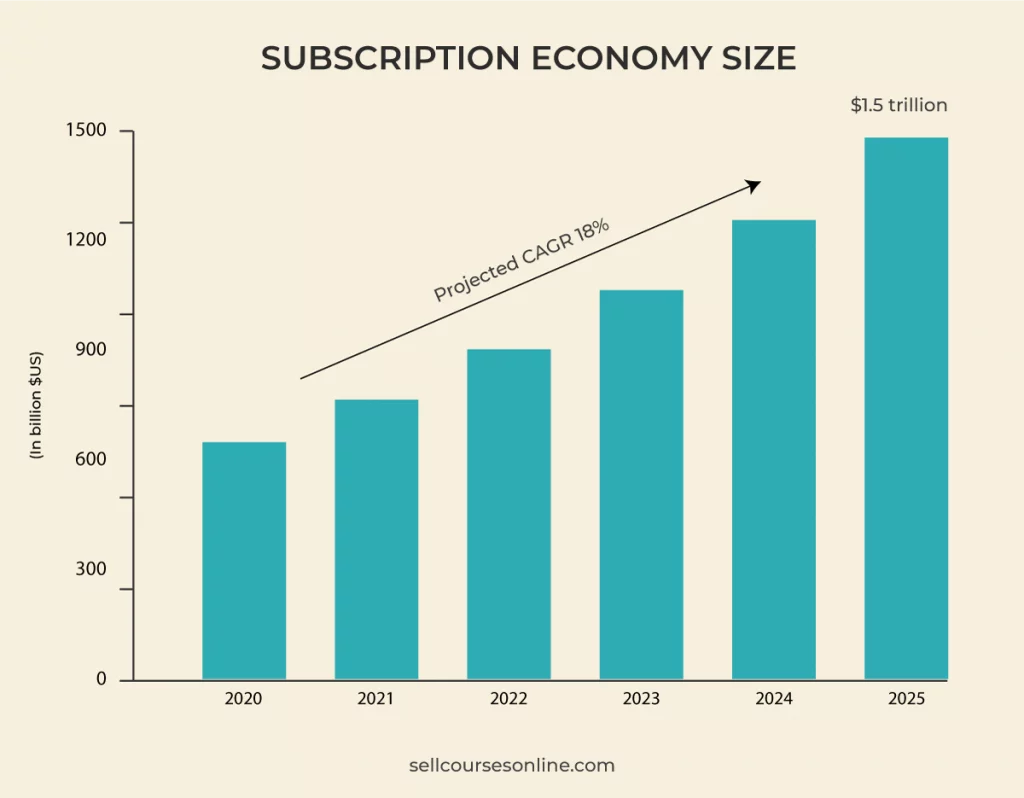
In recent years, online shopping has ingrained itself in consumer routines, and the subscription model has emerged as a prominent trend in the eCommerce realm. This model provides a practical solution for addressing consumers’ recurring needs and expenses. The subscription market is experiencing exponential growth, boasting an impressive Compound Annual Growth Rate (CAGR) of 71%. Projections indicate it will ascend to a staggering $2 trillion valuation by 2028.
Similar to streaming services like Netflix and Hulu, products can come as subscriptions, too. eCommerce stores are experimenting with resume parsing services, meal kits, Apple care, car brake repair services, and monthly clothing deliveries. A diverse array of products and services are now available through subscription models, ranging from streaming services to monthly clothing deliveries and even daily meal kits, as exemplified by HelloFresh. As of October 2022, HelloFresh has attracted over seven million customers worldwide with its customizable meal plans.
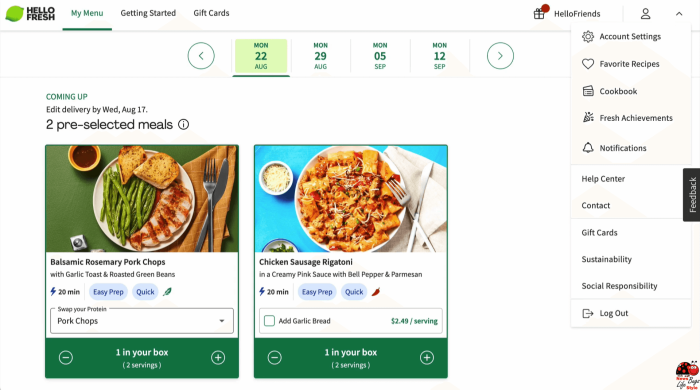
14. Live Shopping
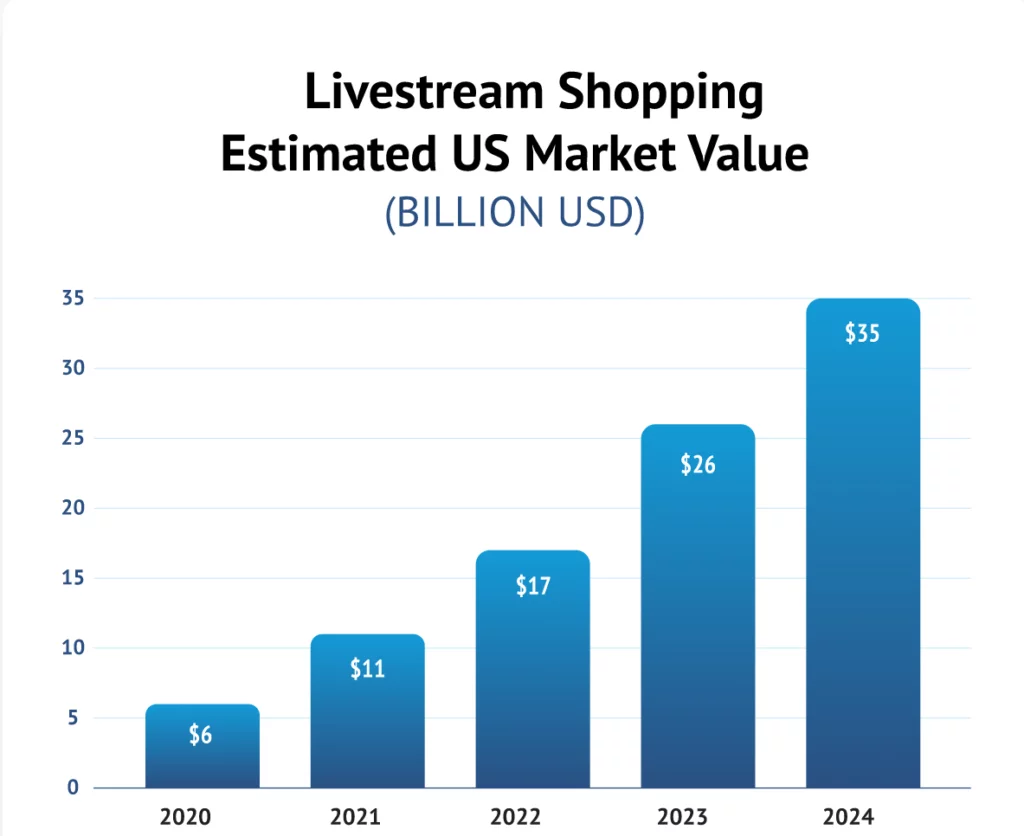
In the rapidly evolving landscape of eCommerce, live shopping has emerged as a game-changer, with Alibaba’s Taobao Live setting the bar high by generating a staggering $7.5 billion in transaction value within the first 30 minutes of its Single’s Day 2020 live shopping event. This colossal success has triggered a domino effect, prompting industry giants like Amazon and Walmart to enter the fray with their counterparts, namely Amazon Live and TikTok. Live shopping is poised to shift from novelty to mainstream.

At its core, live shopping is an interactive video streaming solution that empowers eCommerce brands to engage with their audience in real time. During these live sessions, brands showcase their products, respond to audience queries, and provide instant purchase options, creating a dynamic and immersive shopping experience. While live shopping traditionally revolves around specific brands, eCommerce companies leverage the star power of celebrities and influencers who serve as live hosts, expanding their reach to a broader customer base. This fusion of entertainment and eCommerce is redefining the way we shop online, and its trajectory suggests a promising future as a cornerstone of the eCommerce landscape.
Conclusion
eCommerce is already a formidable force in the business world, and its growth or innovation is no longer stopping. Trends like virtual and augmented reality are being worked on, too, and as the technology matures, we can expect them to be a part of our online shopping experience, too.
While it is tough to get an online brand going today (most investors sell their eCommerce sites before they tank), these trends can help guide newcomers to the latest and upcoming changes to expect.
And if you’re looking for dependable, managed WordPress hosting, you’ve come to the right place. We at Nestify help new and upcoming eCommerce brands get going by providing the best WordPress hosting options powered by Amazon Web Services (AWS). We support page speed optimization so your eCommerce site remains quick and nippy, and allow unlimited site migrations to make A/B testing easier. If you have any queries, please visit our website or contact us at [email protected] so we can host your next project.
FAQs on E-commerce Trends of 2023:
How is social commerce changing the eCommerce landscape?
Social commerce involves selling products directly through social media platforms. It’s becoming increasingly popular as it allows brands to reach customers where they already spend time online.
What is the impact of customer reviews and user-generated content on eCommerce sales?
Customer reviews and user-generated content significantly influence purchasing decisions. Positive reviews and authentic content can boost trust and drive sales, while negative reviews can deter potential buyers.
How is data privacy affecting eCommerce trends?
Data privacy regulations like GDPR and CCPA have forced eCommerce businesses to be more transparent and secure with customer data. This has influenced how data is collected, stored, and used for personalization.
What are the emerging payment methods in eCommerce?
Emerging payment methods include digital wallets (e.g., Apple Pay, Google Pay), Buy Now, Pay Later (BNPL) services, and cryptocurrencies like Bitcoin. These offer convenience and security to customers.
What is the future of eCommerce in the post-pandemic world?
The pandemic accelerated eCommerce growth, and many of these trends are expected to continue. Businesses are likely to focus on improving online experiences, supply chain resilience, and customer engagement.
How can small businesses and startups compete in the eCommerce industry dominated by giants like Amazon and Alibaba?
Small businesses can succeed by finding niche markets, providing exceptional customer service, using social media marketing, and leveraging technology to streamline operations.



